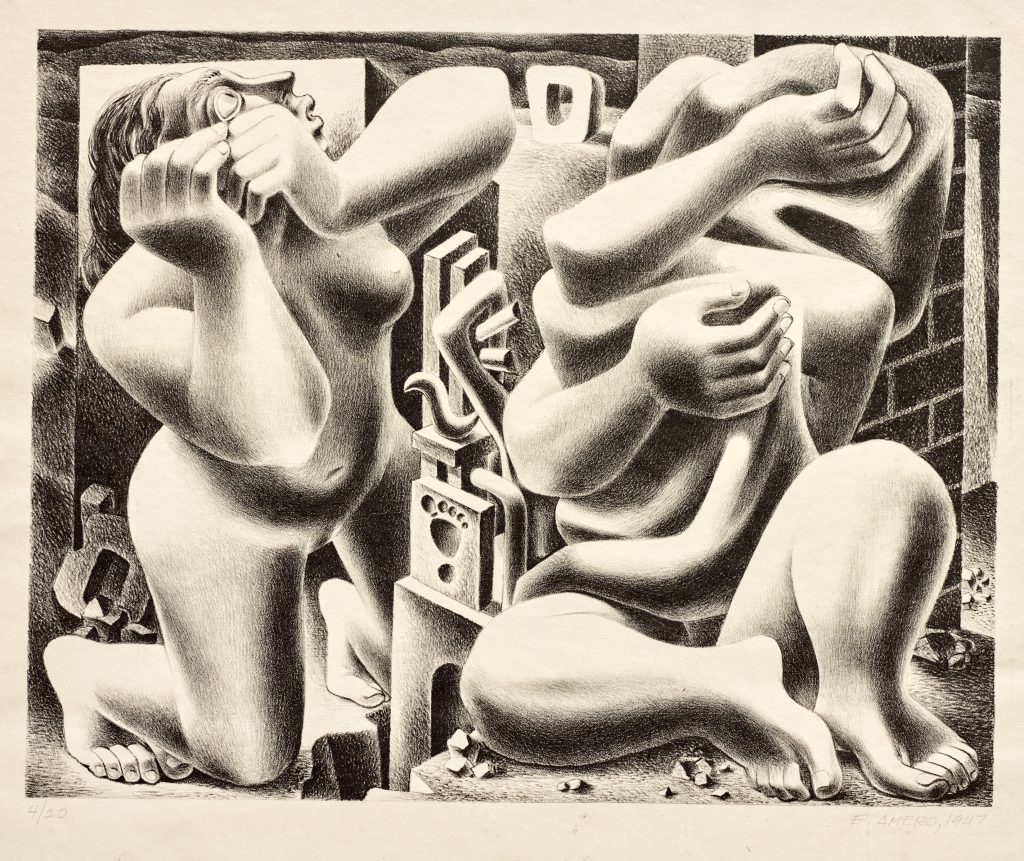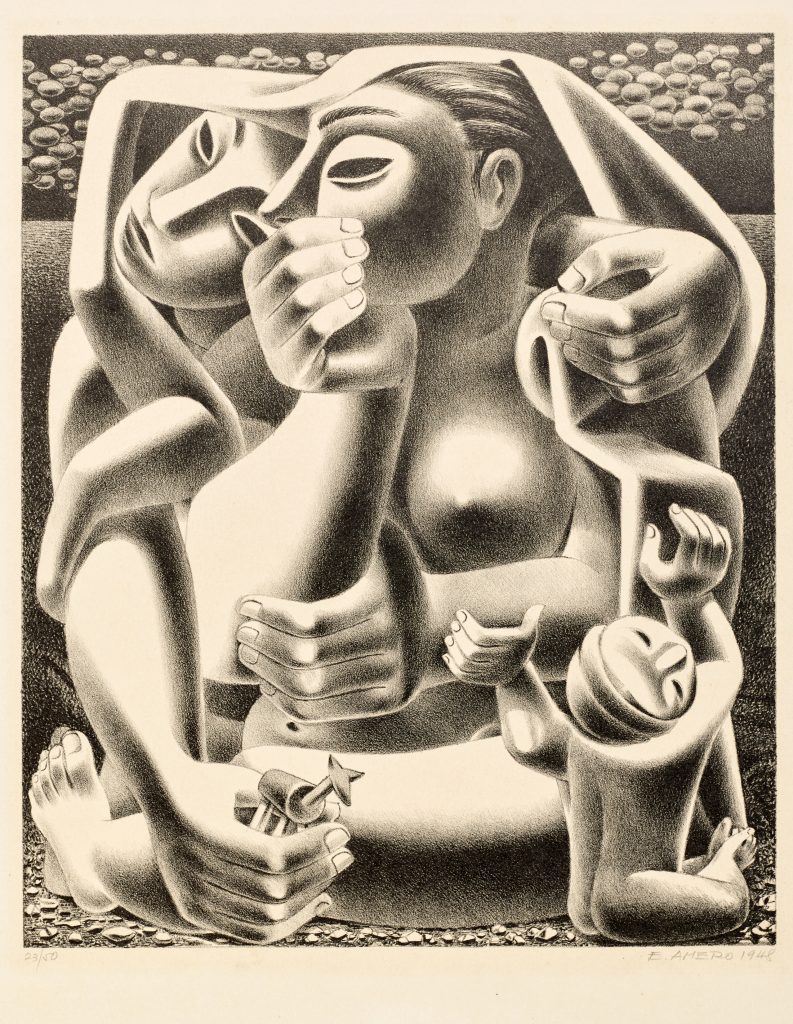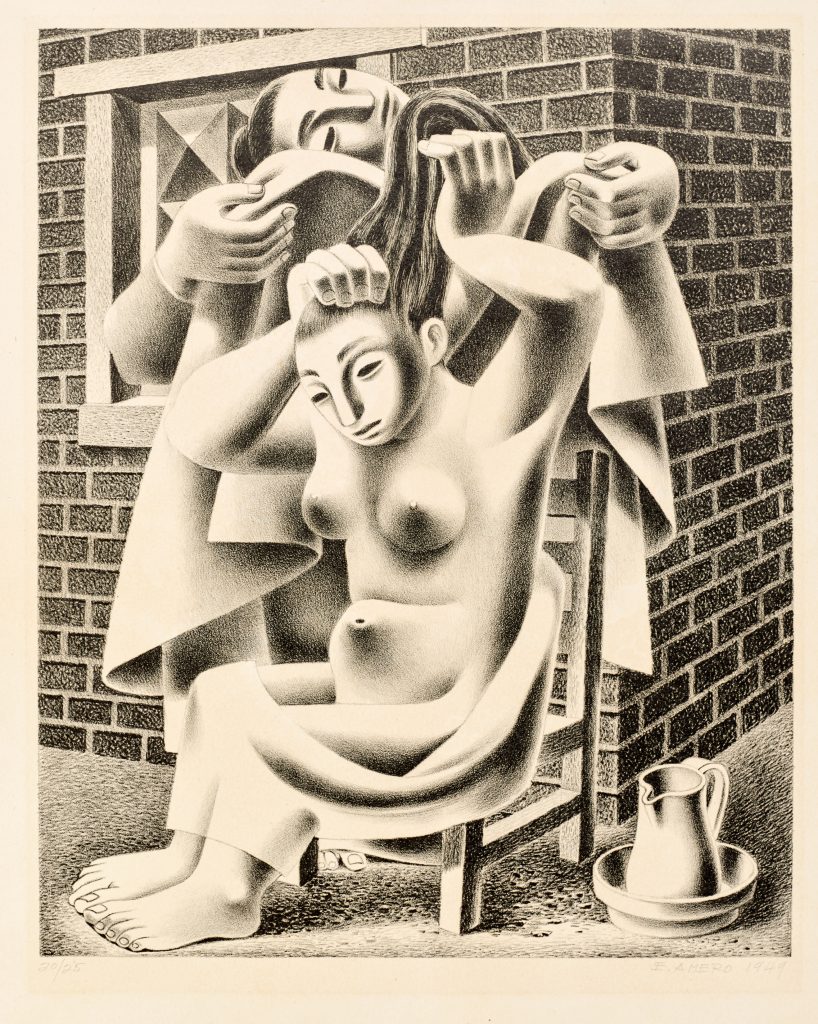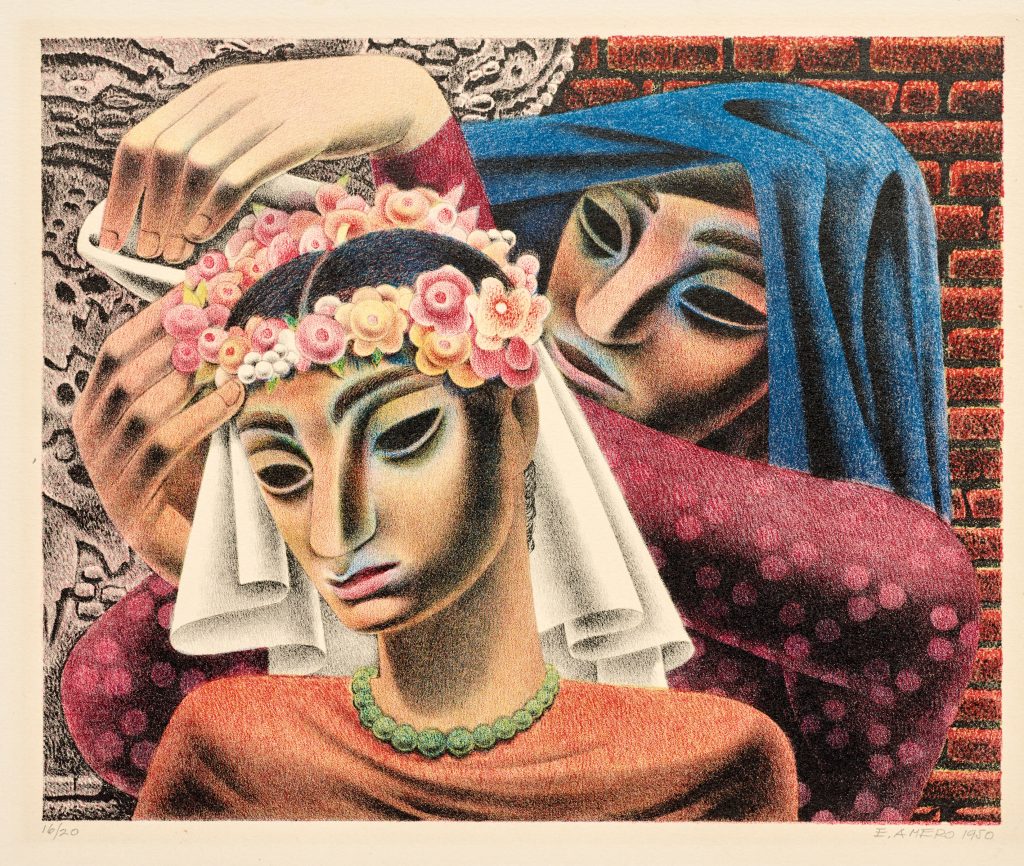Modern Mexican art is dominated by artists with colossal reputations—Diego Rivera, Rufino Tamayo, Frida Kahlo, and many others. In my experience though, it is sometimes the artists who have garnered less attention that produced the most gripping works, charting unique artistic trajectories. One such figure, whose work I adore and have long wanted to write about, is Emilio Amero (1901–1976). Among the most versatile artists of his generation, Amero painted in fresco and on canvas, but was also a graphic designer, caricaturist, photographer, filmmaker, printmaker, gallery owner, and professor.
Born in Ixtlauaca, in the State of Mexico, Amero moved to the capital as a boy, eventually studying at the National School of Fine Arts. Although he was initially drawn to fresco painting and assisted on several important mural projects, Amero left Mexico in 1925 and settled in New York, where he worked as an illustrator for various publications, including the New Yorker and Life, and designed advertising campaigns for Saks Fifth Avenue. In New York, he explored new mediums, producing a short experimental film, 777, and trying his hand at photography. In his early photographs, he played with double exposures and other techniques for manipulating photographic negatives, but he eventually began working in a more documentary style.
Although Amero’s love for film and photography would continue when he returned to Mexico in 1930, he began working in the medium for which he appears to have had the greatest creative passion—printmaking. While teaching lithography at the National School of Fine Arts, Amero also opened a gallery, Galería Posada, where he exhibited the work of young artists, gave lectures, and held film screenings. In the mid-1930s, he returned to the United States, moving between the two countries for many years while completing various projects and teaching in New York, Mexico City, and Seattle. In 1946 Amero accepted a position at the University of Oklahoma in Norman, where he taught graphic arts until his retirement in 1967.


The DMA is fortunate to have four lithographs from Amero’s time in Norman, all of which speak to larger themes in the artist’s work. There is Fear and Where? show the artist’s propensity for contorting and compressing figures, their rigid bodies giving the impression of flesh that has turned to stone. This disquiet is enhanced by the dreamlike landscape in which the figures exist, filled with oddly shaped objects whose purpose seems unclear. In contrast, Dressing and Fiesta show more relatable scenes, their figures alive with movement, recalling some of Amero’s photographs of everyday life in rural Mexico.


Three of these prints entered the collection after winning prizes at DMA exhibitions celebrating printmaking in the Southwest during the mid-20th century. Together they are a testament to Amero’s impact on the arts of this region.
Dr. Mark A. Castro is The Jorge Baldor Curator of Latin American Art at the DMA.